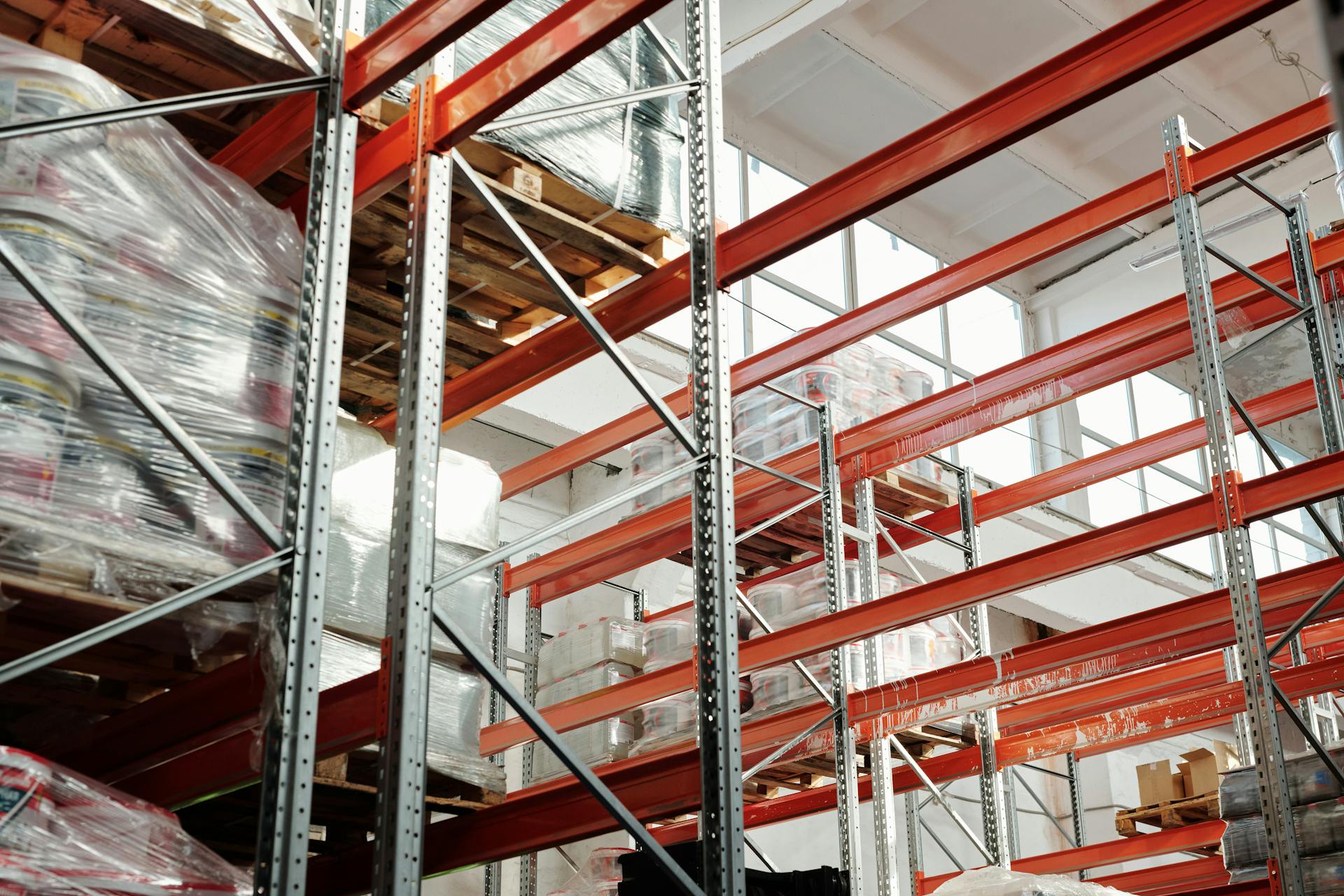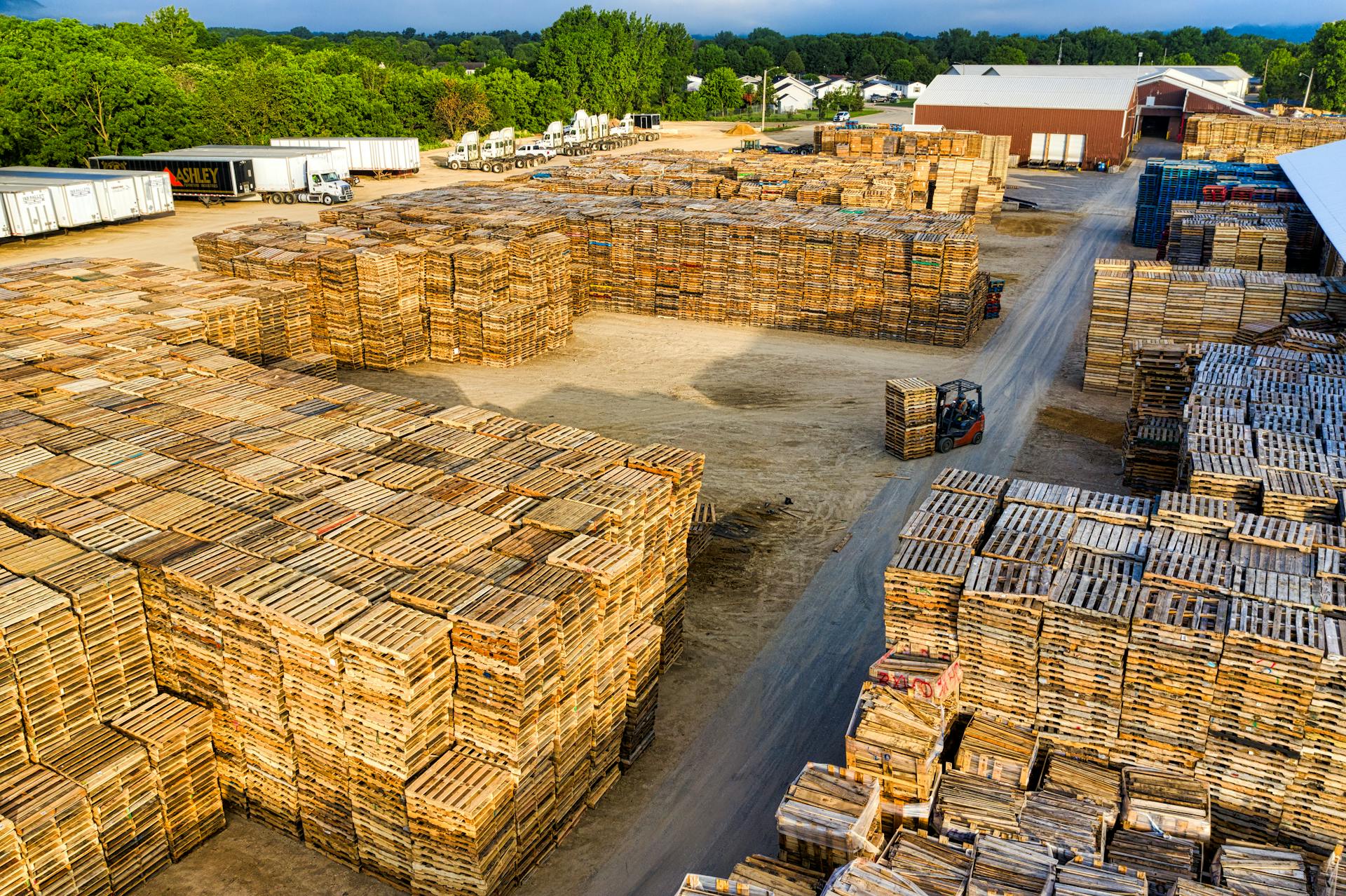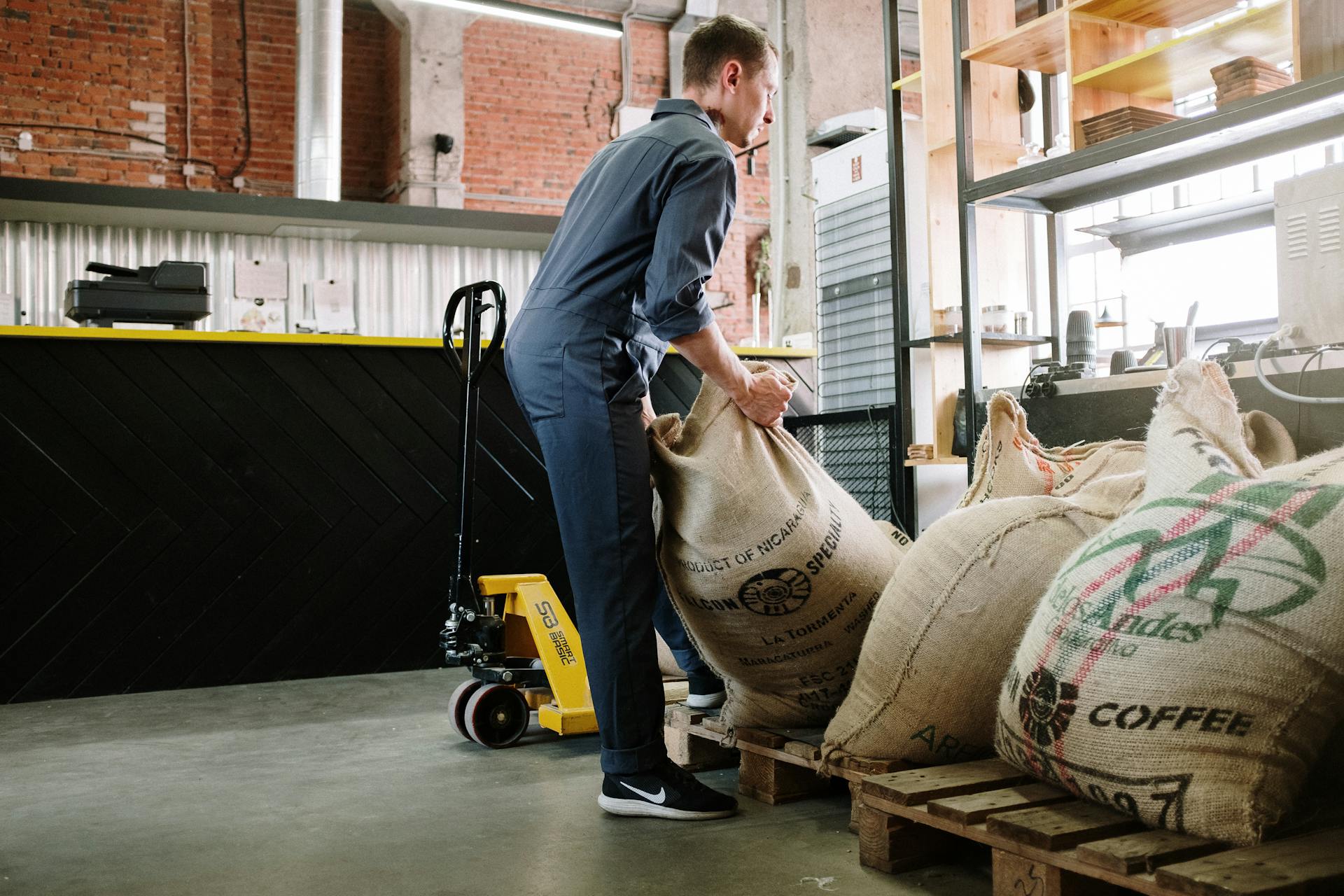
Pressure-treated wood pallets have been a staple in the shipping and storage industry for decades, but are they a safe and reliable material choice? Unfortunately, the answer is no.
The use of pressure-treated wood in pallets has raised concerns about the potential health risks associated with the chemicals used in the treatment process.
Arsenic, a known carcinogen, was commonly used in pressure-treated wood until its use was phased out in 2003.
What Are Pressure Treated Pallets?
Pressure treated pallets are made by infusing wood with rot-resistant chemicals that act like a fungicide to fight off wood rot bacteria.
These chemicals can contain toxic substances like Chromated copper arsenate (CCA), which includes arsenic.
The job of these chemicals is to prevent wood from rotting, especially if it has prolonged ground contact.
However, these chemicals can leach into garden soil, which is a concern if you use the pallet near a patch of soil meant for growing food.
Pressure Treatment Process
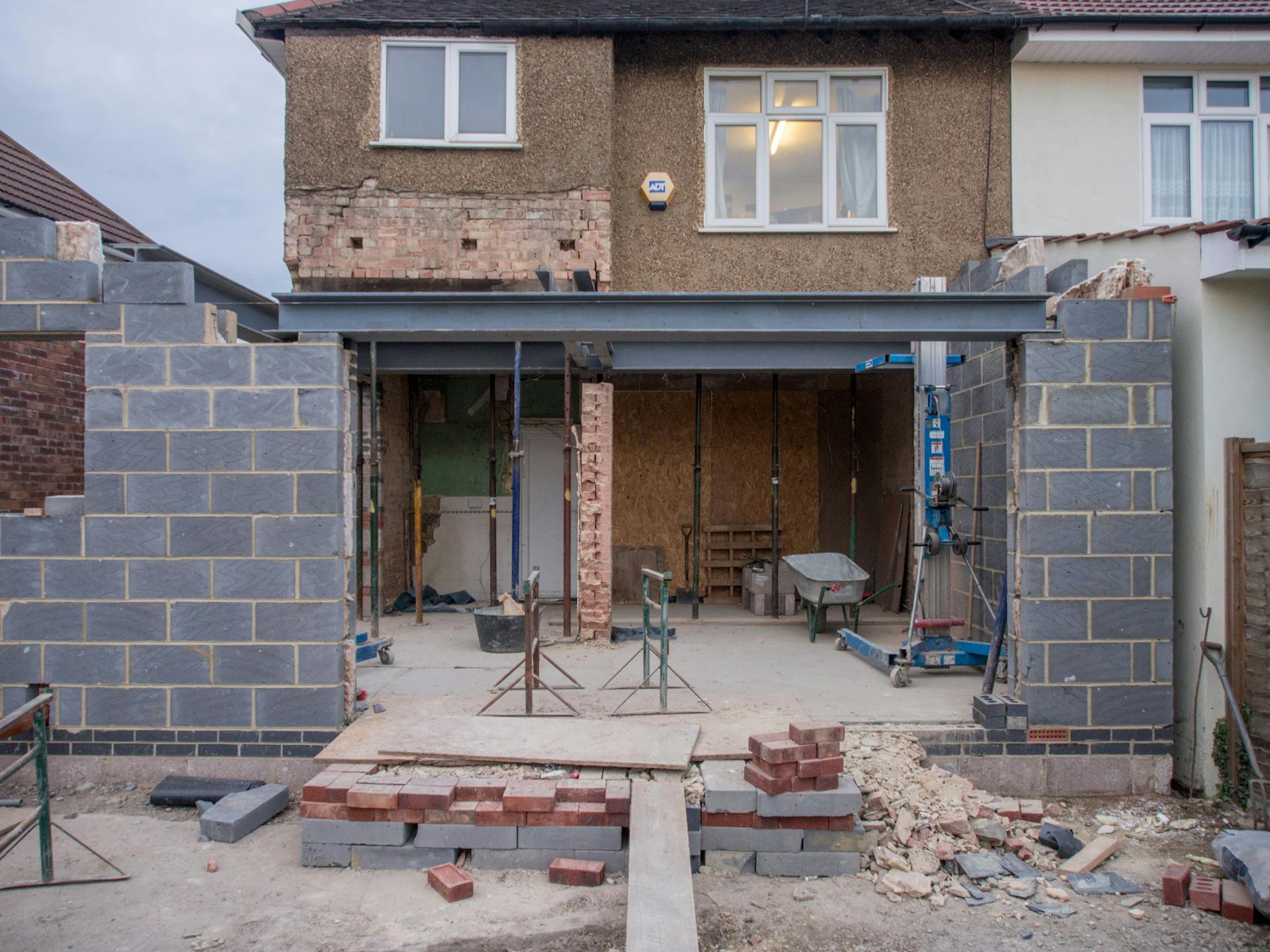
Pressure treatment involves placing wood in a vacuum chamber and filling the fibers with preservatives to make it resistant to decay and insect damage.
Manufacturers use this process to create pallets that can withstand harsh conditions, such as high moisture levels or humid climates. Logistics managers commonly use these pallets for outdoor storage or in areas with extreme temperatures.
Pressure-treated wood can resist rot and insects, maintaining its longevity in tough conditions. This makes it a reliable option for logistics managers who require durable pallets.
However, because pressure-treated wood contains chemicals, businesses must follow safety guidelines when handling or disposing of it.
Safety and Gardening
In the US, Canada, and UK, pallets are more likely to be treated with heat, rather than Methyl Bromide.
Heat-treated pallets are heated to temperatures so hot that it removes all insects that may be nestled in them.
There are three main types of heat-treated wooden pallets.
You'll need to use a non-toxic sealer product to protect those wooden pallets in your garden, making Seal It Garden Wood Sealer the best way to do so.
You might like: Heat Treated Pallets Stamp
Understanding Treated Pallets
Pressure-treated pallets are a reliable option for logistics managers who require pallets that can withstand harsh conditions. However, they contain chemicals that can leach into the soil, making it essential to follow safety guidelines when handling or disposing of them.
The certification label on a treated pallet will indicate the type of treatment it has undergone. A stamp with the appropriate treatment code, such as GC (Ground Contact) or PT (Pressure Treated), will be visible on the side of the pallet.
There are several types of pressure treatment, including borate, alkaline copper quaternary, and noncombustible wood. Each type has its own benefits and drawbacks, and it's essential to choose the right one for your needs.
Here are some key things to know about pressure-treated pallets:
- Pressure-treated pallets are not always labeled, so it's best to check with the supplier.
- Heat-treated pallets marked as HT, KD, or DB are safe to use in a garden.
- However, avoid heat-treated pallets that are also marked as GC or PT, as they may contain toxic preservatives.
Types of Plywood
There are three main types of pressure-treated plywood. Borate is a water-based solution that protects against mold, insects, and breakdown while preserving the wood's color.
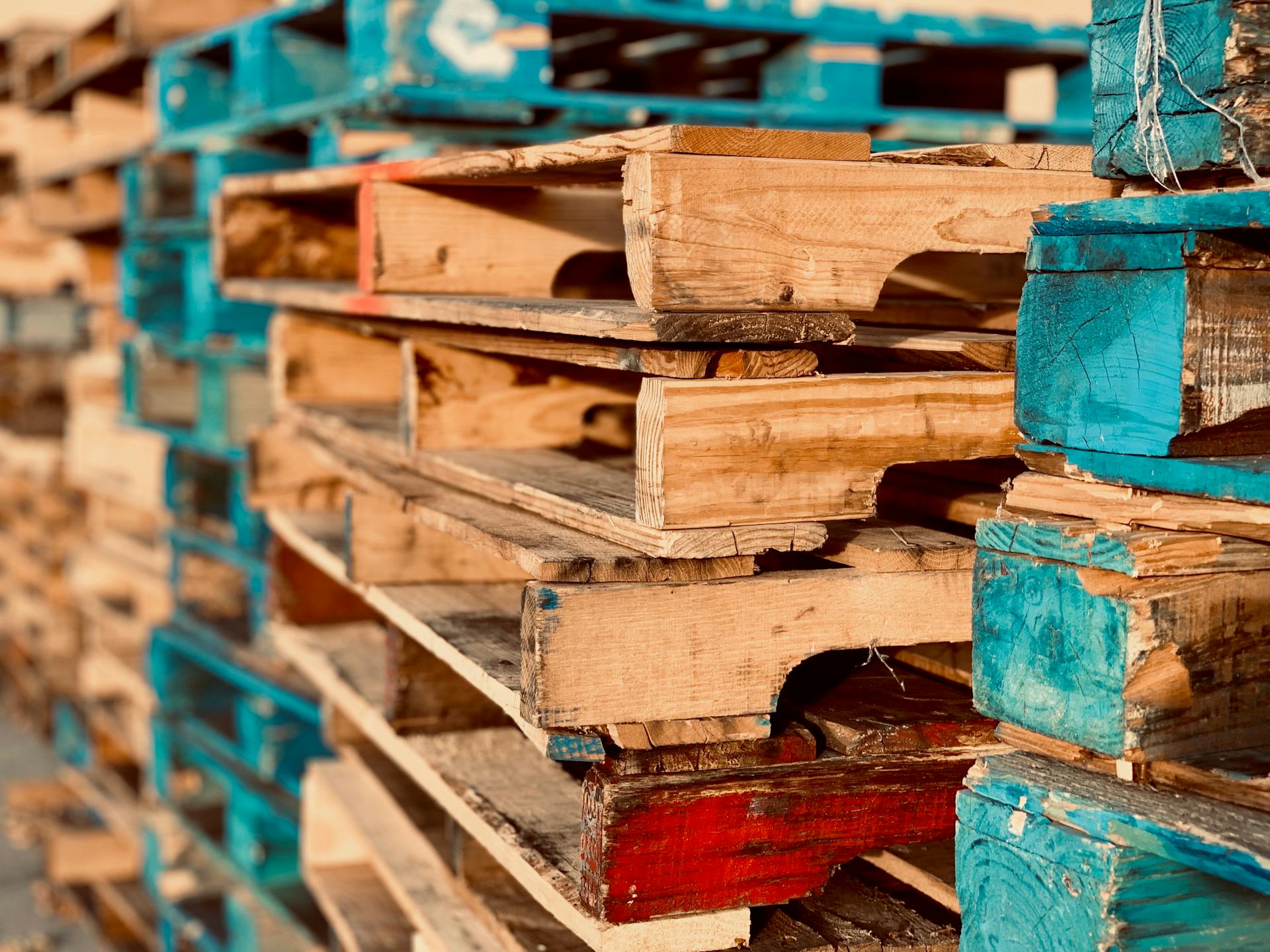
Borate is best suited for dry locations. This type of treatment is a good option if you're looking for a chemical that doesn't change the wood's color.
Alkaline Copper Quaternary is the most environmentally friendly option. It protects against mold, insects, and breakdown, but it does change the wood's color to a darker brown tone.
This type of treatment is a good choice if you're looking for an eco-friendly option. It's also free from arsenic and chromium.
Noncombustible Wood is treated with a fire-retardant chemical before being pressurized. This helps with flammability, but it's not advised to paint it, as it may affect performance.
Here's a brief summary of the three types of pressure-treated plywood:
Checking Treated Pallet Wood
You can tell if a pallet has been pressurized by looking for visible signs of treatment, such as a greenish tint or minor puncture marks on the wood surface.
To be sure, it's best to check with the supplier, as not all pressurized wood pallets are labeled and not all pallet wood is pressure treated.
A certification label will be stamped onto the side of the pallet once it's been treated, and this label should include the appropriate treatment code.
Here are the main stamps for pressure-treated pallets to look out for:
If a pallet has been repaired with untreated wood, the entire pallet should be retreated and then restamped.
Using Treated Pallets
Associated Pallets sell wooden pallets treated with a specialised kiln that processes up to 3000 pallets per day.
These heat treated wooden pallets are actually considered the best for ISPM 15 regulations.
Wooden pallets treated with heat are better than other treatments, like chemical fumigation, because they don't leave chemical residues behind.
Heat treated pallets can be a cost-effective option for keeping produce secure during shipping and transport.
Pallet wrap can be used to keep wooden pallets safe from harsh weather conditions and prevent the need for intensive or expensive weatherproofing techniques.
Pallet wrap is a great option because it doesn't absorb moisture and keeps produce secure.
It's worth noting that heat treated pallets don't help stave off rot, so they may still be susceptible to wood rot if they become damp.
Intriguing read: Are Chep Pallets Heat Treated
Frequently Asked Questions
Is it illegal to burn wood pallets?
Burning wood pallets is not inherently illegal, but it's essential to ensure they were not treated with hazardous chemicals before burning them
Sources
- https://icpscrating.com/are-pallets-pressure-treated-wood/
- https://associated-pallets.co.uk/blog/are-wooden-pallets-treated/
- https://www.falm.com/2024/12/types-of-treatments-used-on-wooden-pallets-explained/
- https://www.falm.com/pallet-treatment/
- https://www.thewoodworkplace.com/are-heat-treated-pallets-safe-for-gardening/
Featured Images: pexels.com
